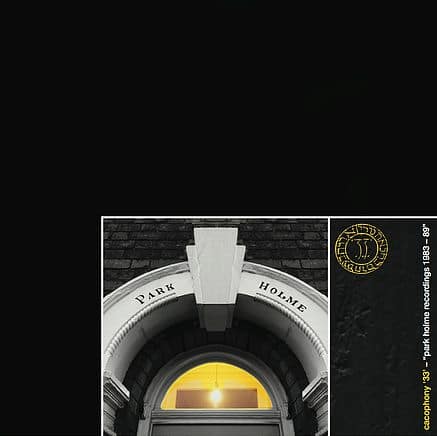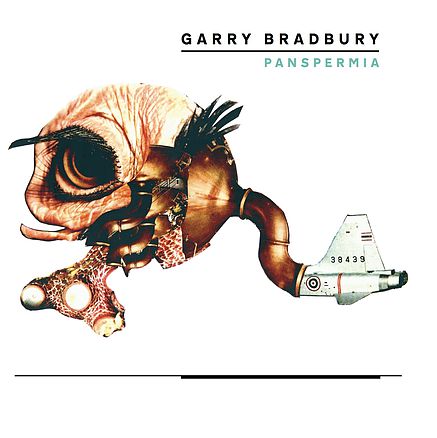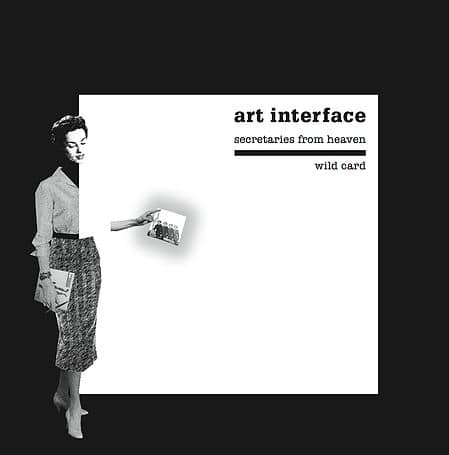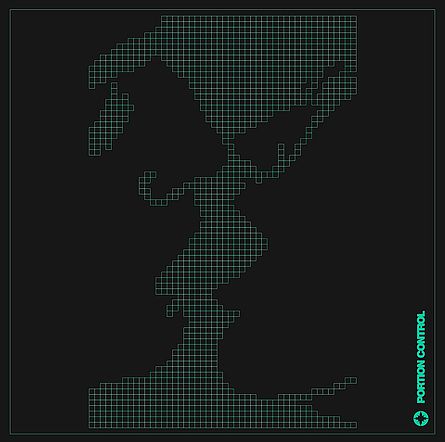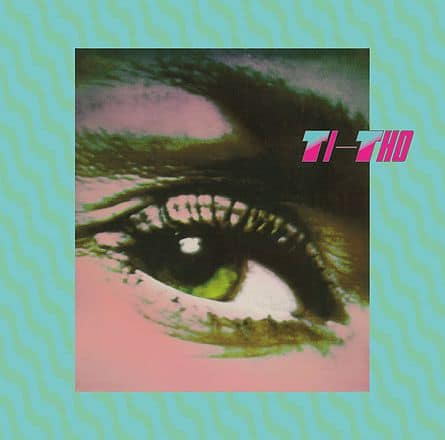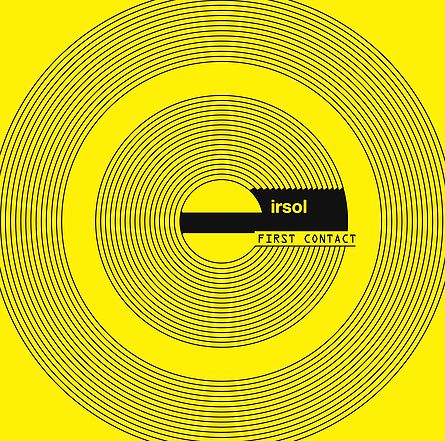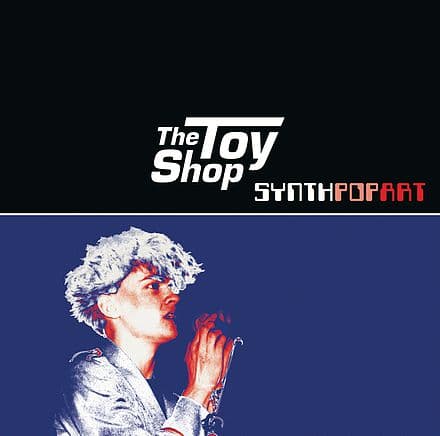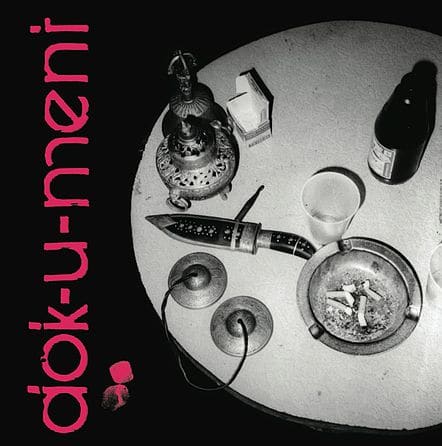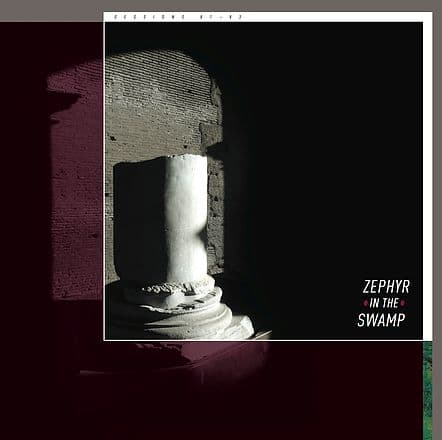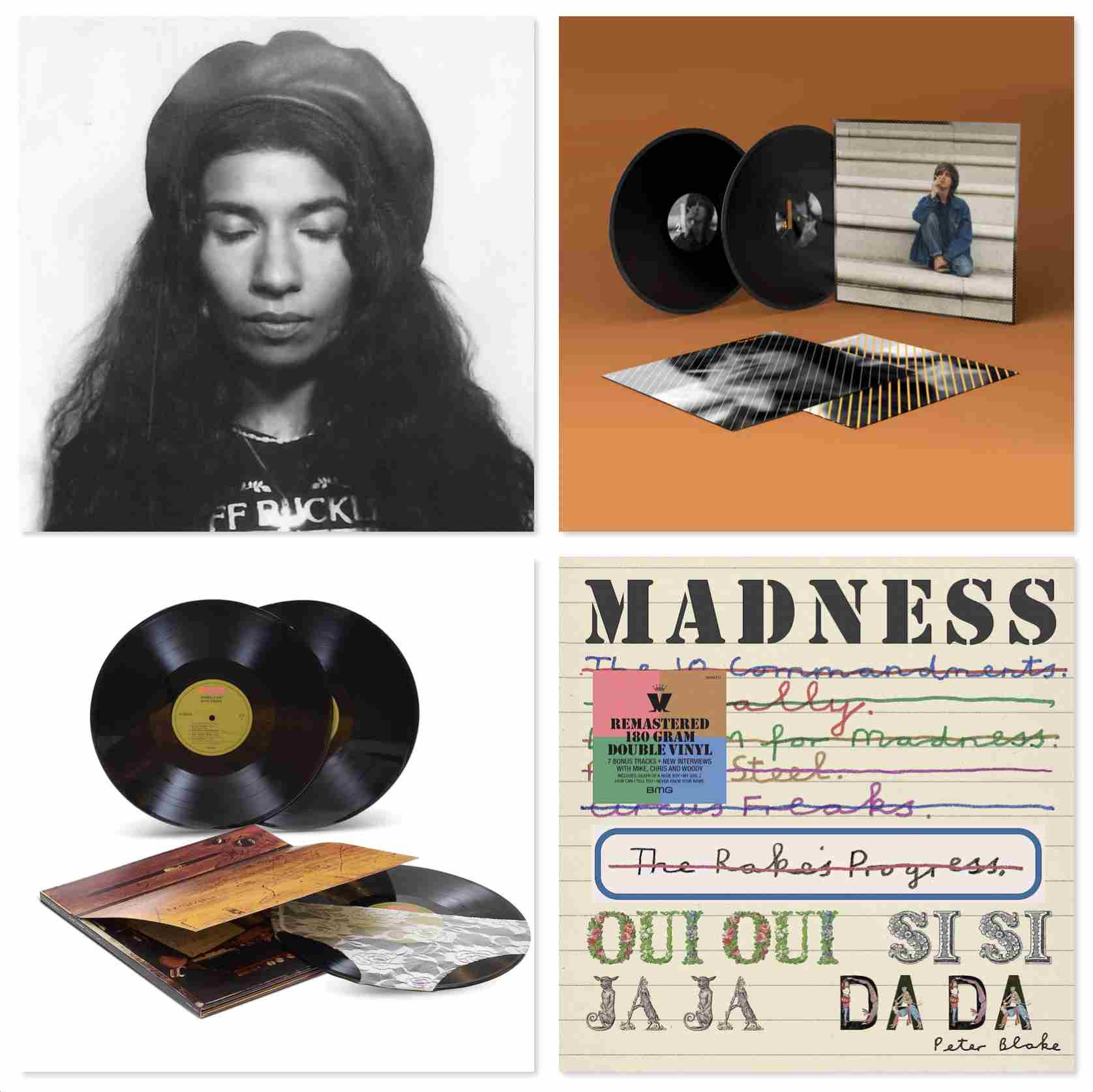The Article
VOD-Records Presents 80’s Minimal.Synth.Wave Volume III
4th April 2016
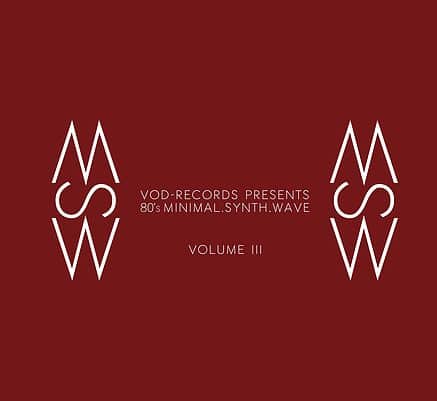
Label: Vinyl On Demand
The edgy, rather ‘avant’ German-based, record label, Vinyl On Demand, has released a host of minimal synth vinyl albums for general release on beautifully pressed heavyweight vinyl plus attractively packaged sleeves, sometimes gatefold affairs, along with a certificate and often other bits and bobs including inserts and 7” singles.
The label also offers a luxury edition that collects all of these LPs within one collected pizza box-style container: the subject of this review. This is the third time that the label has collected such an array of LPs. The box set is a limited release to just 300 copies (each box contains an individually numbered certificate)
What follows is a review of each and every LP contained within and, where possible, a brief interview with the artists involved. I have noted if the LP contains any extra goodies.
CACOPHONY ’33’ – “PARK HOLME RECORDINGS 1983-89”
Extras: 7” single
There’s an earthy quality to this album. Imagine Britain’s author, playwright and humorist Alan Bennett making a minimal synth album and this is what you would get. The tempo and the playful nature of the music has an almost ‘night at the fairground’-like quality. It sounds very…English. Almost Music Hall in its musical structures and verbal qualities while the instrumentation, with a few exceptions, tend to be quite closed in and claustrophobic which adds to the immediacy of the music. Fans of Robert Wyatt need to take a listen to this one.
GARRY BRABURY – PANSPERMIA
Extras: double album, gatefold sleeve, white vinyl, 7” also on white vinyl
The first side to this instrumental Bradbury double album is cool and sparse with ambient elements combined with industrial and electrical power punctuation that never allows you to settle. You begin the side looking forward to a relaxing 20 minutes and finish wearing a nervous tick.
The second side of disc one and the first side of disc two are almost a notepad of contrasting ideas. You almost feel that Bradbury made a list of these tracks while sipping on a coffee in a local cafe. They feel like a shopping list, a sundry shotgun blast of thoughts.
The flip sides have a commercial feel to them and I’m surprised I didn’t hear more about Bradbury in the new wave circuit. He seems ideal chart material from the mid-80s. The Bradbury atmosphere uses plenty of samples to punctuate relatively high tempo, bright and breezy ditties with sparkling programming that can range from the Numan-like to something akin to Philip Glass.
Listening to this album, you feel that you are reading a man’s private diary of thoughts and musings.
Garry Bradbury Interview
Why does the album exist?
“The compulsion to collage. Delusions of grandeur. Obsessive neurotic impulses.
Did the album meet your expectations?
I’m happy with how the album turned out. VOD selected the most boppy tracks. Its a very happy selection and the pressing sounds nice and bright/clear.
Can you give me some idea of the technologies used in the album’s creation?
“I’ve always selected tools that are relatively simple, quick and intuitive to use. That includes software. Nothing particularly complex or elaborate. The results would have been entirely different if I’d used other equipment. Each piece consists of, or describes, my interaction with a given equipment configuration. Each composition is a document of these investigations. I tend to reconfigure the equipment for each track. It’s often as if I paint myself into a corner or devise problems that I have to figure my way out of.
“Having said that, back in the 80s right through into the 90s, music technology was prohibitively expensive. I was often borrowing equipment or recording in friends ‘studios’. This meant that I often didn’t have day-to-day access to a full working kit. It was a continuous struggle to wrench results from very limited set-ups One had to be continuously inventive, imaginative and resourceful and this was, somehow, conveyed in the music itself.
“It’s odd that nowadays we seem to be paralysed or lulled into indifference by an abundance of cheap tech.”
ART INTERFACE – SECRETARIES FROM HEAVEN/WILD CARD
Extras: double album, gatefold sleeve, photo/lyric sheet insert
This vocal synth-based album is sharp-edged, staccato, nervous, political, fractious and almost Devo-like in its style but the soundstage also dips into other areas. For example, on occasion, there’s an almost European, French I’d say, edge to some of the tracks that adds to the discordant nature of the presentation. That’s Side A of the first disc, Secretaries From Heaven. Side B offers largely instrumental fare where the music sometimes rambles, other times there are intriguing ideas explored but not to any natural end. There are exceptions: Joyride is a primitive, yet effective driving track.
Disc 2, Wild Card, shows an evolution in vocal delivery and the synth arrangements. The primitivism has largely receded to make way for a far more complex suite of musical and laconic, dream-like vocal deliveries with intriguing lyrical ideas with greater subtly and nuance in their delivery. A dramatic tale of contrasts in both discs, you could almost believe that they were from completely different groups. A fascinating journey, nevertheless.
Art Interface interview
Why does the album exist?
“All artists are either running away from the world or trying to remake it the way they see it or else just criticising it for what it really is. I was/am doing all of the above.
“The record was not done with any intent. These recordings were made over five or six years in various home studios with various band members so we actually had no real intentions other than to follow each good idea and make it real. Some songs are political but many others came about with no objective and were given clever/fitting titles after completion.
Did the album meet your expectations?
We didn’t really have a message per se, just a view but yeah, that’s still obviously evident here. I’ve had no hopes for 30 years but this is far beyond anything I imagined in the first place.
Can you give me some idea of the technologies used in the album’s creation?
Amongst other things, a Fender reverb, Moog Prodigy, Roland S09 and a small 50s tube amp. In 1985, I purchased a Fostex 8 track and a used DX7. We chose what we had because it was all we could afford. It was quite sufficient, if you knew what you were doing. We didn’t want a slick Pro sound, like you’d get in a big-ass studio.
PORTION CONTROL – PROGRESS REPORT 1982-86
Extras: double album, gatefold sleeve
In some ways, this LP reminds me of a raw, primitive version of Orchestral Manoeuvres in the Dark: their cousin suffering from Attention Deficit Disorder, perhaps? Disc one shows a distinct aggressive and added passion that reminds me a tad of Pop Will Eat Itself.
With the beginning of the second disc, the tracks quickly develop towards the short, sharp and to the point with synth work that never hangs about. There’s always a high tempo running throughout, in fact. And that can be seen as the downside to the LP, as a whole. The band’s output can be a little one-paced. I wanted to see what else they could do but was only able to see a sliver of their capabilities. Unless there isnothing else? I ended the LP feeling like I’d stepped off a roller-coaster ride with a “What happened there, then?” bemusement.
The band name, Portion Control, contradicts their nature entirely. Not only does this band care less for any attention to the concept of portion control, they approach their muse with such a manic energy that I’m perfectly sure that they can do without the food entirely.
TI-THO – FREUZIEL
Extras: 7” single
There’s a definite Bjork-Like delivery (with Kim Wilde-esque flavourings, if you want to be pedantic) to the vocal performance of Marisa Calcagno. That higher pitched, slightly breathless approach that utilises the full range of vocal frequencies including a slightly high pitched hysterical edge for effect. Very Sugarcubes. Meanwhile, the backing tones from Thomas Stelter provides a suitable contrast, often being cooler, calmer and metronomic in its rhythms. Of course, there are exceptions to this, as you can expect in any body of work but our Thomas seems quite happy to tread his own pathways. Actually, I would have liked to have heard the musical directions of Stelter as a solo artist. He has some intriguingly krautrock structures (in amongst the new wave commercial synth runs) in his work that promises much but never has the presence to go very far in this LP.
Minimal synth it is but the set-up, as it stands, is all very popcorn. That said Bjork and Sugacubes fans really need to check it out.
IRSOL – FIRST CONTACT/HALF LIFE
Extras: none
Nice to see that the lads used a couple of Acorn computers to make this album. Not any old Acorns, though, the System 1 (a DIY kit) and System 3 (often stacked as racks and used in Labs). How these pieces of vintage 8-bit ephemera sat next to their Roland TR-808 and Korg MS20, gawd only knows. Still, the use of such Acorns to make any LP is a first for me and warmly applauded by this olde world computer geek.
The music swimming around both packs of silicon chips is classic minimal synth. This is core stuff. Bare, stripped (often in terms of time, as well as orchestrations, some of these tracks are rather brief). The meat of the music features plenty of varied and innovative ideas but within the minimal synth cage. This might be ‘by the book’ but it’s all the more wonderful for it. More than that, there’s also a distantly vintage edge to it that sometimes has a distinct krautrock feel. The first part of First Contact, for example, has elements of Tangerine Dream in there or even Klaus Schulze with its rhythmic bass repetitions, vintage smoothness and melodic circles while the few tracks later on Side 2 from Half Life has a more complex, slightly proggy, Mike Oldfield suite of structures if not stylings. Cracking stuff.
ROB VAN – ROB SOLO MINIMAL SYNTH/HEAVY MENTAL & COLLABORATIONS
Extras: none
There’s a certain hypnotic nature to the outpourings of Rob Van. For each track has a very short list of essential ideas and central themes. From these, Rob Van repeats and tweaks to form an expanding structure that provides a techno future peek as he weaves a mesmerising and often compelling sonic pattern.
For Van, the content of the music, the melodies and forms are secondary to the structures. Van is more of an architect than an interior designer. He builds a shell and and then asks you to populate it yourself with thoughts and wonderings.
As the name itself might infer, Heavy Mental is rather harder, less soporific and more startling with greater attack through the electronic constructions.
With this LP, Van shows his love of order and method and how each can be affected by small infractions.
Rob Van Wijngaarden/Heavy Metal interview
Why does the album exist?
“Through the Throbbing Gristle’s IR-newsletter, I knew a lot of people and I just sent them tapes with whatever I made that week. One example is a tape called Rob’s Greatest Hits with covers of Devo (Mongoloid) and The Tits (Daddy Is My Pusher). There is only one copy of this tape and VOD has it! My collaboration with Ruud Kluivers (Androids Dance) I had completely forgotten about. I recorded the tape, I think I only played it once.
“VOD’s Frank Meier got a hold of it and wanted to put it on the album. He had to send me a rip because I did not know what he was talking about! I called Ruud Kluivers (I still am in contact with him) and he also didn’t know about this track. We did remember playing music together, but that was all.
“I am flattered that there is an interest in the music I made but I never was trying to achieve anything with it. I love music, so I wanted to make music. That was all that there was to it. Nowadays I get more response to my music that in 79-82.”
Did the album meet your expectations?
“For me the most interesting thing about the album was the artwork. Steve Lippert (the designer) took all the time I needed to create the sleeve and labels. I wanted the Robots Never Smile side to look as much as possible as the original cassette on Ptôse Production Présente, released in 1981. Since a cassette has different proportions than an album, I needed something extra to the left of the sleeve. I always loved the Obis on Japanese releases and then I got the idea to have an Obi on the left. Steve has a fiend who speaks Japanese and she helped, translating my name and the album name. For the side with songs by Mental and Heavy Mental I sent him an old photograph of the band’s logo and he transformed that into an album cover. I specifically asked that the type on that side was Avant Garde, since I always used that type for our products (you can see it also on the single 17 to 7 on 33).”
Can you give me some idea of the technologies used in the album’s creation?
“The first musical instrument I bought was a Revox A-77 (because Eno mentioned it on his Discreet Music album). Then I got a Korg-MS-20 (because it was the only affordable synthesiser in 1979) and a Roland drum machine with presets. I had two friends who played guitar, together we had a band. We had no bass, because I had no friends who played bass. It was as simple as that.
“I would have liked a programmable drum machine and some where released in 1979-80 but it was very hard to buy those because there were Dutch or European import restrictions on Japanese products. My solo work would have been more interesting with programmed rhythms. The MS 20 has a very distinct sound and that certainly contributes a lot to the charm of my recordings.”
THE TOY SHOP – SYNTHPOPART
Extras: 7” single and art insert
A band that headed more towards the new romantic sounds of synth pop with noises that would have been wholly approved of by the likes of Steve Strange. There’s a certain glamour and lightness to much of the music on this LP with an affected vocal delivery that aped much of what was to hit the national charts. This sounds like a band looking for a label deal: the track, Attack Decade, even sounds like it could have been penned (and sung) by Midge-era Ultravox, in fact. Even the choice of Vince Clarke-like synth noises tells it own story. Within this synth pop-like sub genre, there is much to like, however. There’s plenty of melodic interest with a rather swaggering, stylish approach to each song. Plenty of frolics, fluff and frippery mix well with the ever so serious drama of the likes of Another Time, Some Other Place.
The Toy Shop interview
Why does the album exist?
As a reminder of the unique sound of 80s guitar/synth pop duo (& solo), The Toy Shop. We created the music to be refreshingly fun and different from a lot of the moody stale sounds of 80s bands. We were trying to achieve worldwide success, starting with the UK but were let down by record companies who shall remain nameless.
Did the album meet your expectations?
The album meets my expectations for what a Toy Shop album may sound like – some of the songs would have sounded better with real studio time back then as opposed to being recorded at home on 4-track cassette. Steve Lippert’s artwork is excellent. Most of the songs have never been released before now.
Can you give me some idea of the technologies used in the album’s creation?
Most of the tracks were recorded at home on 4-track cassette Portastudio with limited gear resources and there are half a dozen or so studio-recorded tracks. Gear used included a Gibson SG guitar, Wasp Deluxe synthesisers, Roland Juno 6 and Korg Micro Preset synths, Melos Echo, Yamaha R100 Reverb, E-Mu Drumulator, Roland TR-606 and Linn Drum Machines. The kit used definitely gives the album its own personality, The Wasp synth in particular had a unique bright sound and I wish I’d kept it!
DOKUMENT – “KUM DE PROFUNDIS” 1982-1984
Extras: none
There are only eight tracks on this LP, four each side. Which says a lot about what you’re going to experience. Track one, Live-in-Fear, certainly lives up to the promise with nine minutes and fifty seconds of layered subtleties, dark and mysterious soundscapes that sit behind an insistent, dry and spare synth beat while the low frequency vocal is effective to the point of haunting. Such explorations continue through the entire side which touches on industrial complexities and some avant-garde diversities before being book-ended by another quite delicious piece of minimal synth workout that mixes classic 70s synth work with sharp edged, raw, early 80s realism.
After synth backing to, what sounds like, the banned 1965 BBC programme, War Game, on the effects of a nuclear bomb strike on the track, Nuclear Advise, we eventually run into the epic Deadly Organ Radiation (16:04) an erratic, worrisome, nervous ending.
It’s quite an album, offering a full range of emotional diversity and technical application.
ZEPHYR IN THE SWAMP – SESSIONS ’81-’83
Extras: none
Divided into the Bright Side and the Dark Side, the former begins very much in an early Human League-esque manner with instrumental, rich synth sounds, closely mic’d but retaining the minimal category that sweep along with a fine pace that varies, providing more flowing, ‘soundscape with beats’ flavourings. These tracks presage the intelligent techno sounds of the mid-90s in their sonic constructions, if not their equipment.
I expected the Dark Side to offer a completely different musical presentation but if the band has taken the name to heart then they’ll need to explain the new approach to me because I didn’t hear any difference. As it stands, the B-side does provide some introspection as the Human League sweeping synths are largely removed or throttled back a tad.
An easy-to-digest and rhythmic exploration of early synth with attractive melodies and frameworks.
Zephyr in the Swamp interview
Why does the album exist?
“This album is the result of reel to reel and cassette recordings found whilst editing and mastering for The Games album Circus Minimus that came out on Analogue Records in 2014. They were recorded towards the end of my band, The Games, in 1980 with fellow keyboardist Colin Hughes. The recordings were quite fragile, to say the least, in fact many snapped whilst transposing them from Revox tape machines and Akai tape machines for mastering.”
Did the album meet your expectations?
“In those days everyone was limited in what they could get their hands on as far as synthesisers were concerned. We were lucky as a music shop, based in Liverpool, Frank Hessey’s gave us the shout when the latest Roland hardware came from the factory.”
Can you give me some idea of the technologies used in the album’s creation?
“It was noted by many people at our gigs in Liverpool and the Wirral with The Games that OMD man, Andy McClusky, would come to our performances making notes and watching what hardware we were using: a Roland SH09 and Yamaha and a Dr Rhythm drum machine, actually. These instruments were the structure to all the music from Zephyr in The Swamp. Recorded on Revox and Akai 4000 D machines, we bounced rhythms using sound on sound, triggering rhythms through the Roland SH09s. We added Roland organ strings into some of the melodies to add some atmosphere.”

